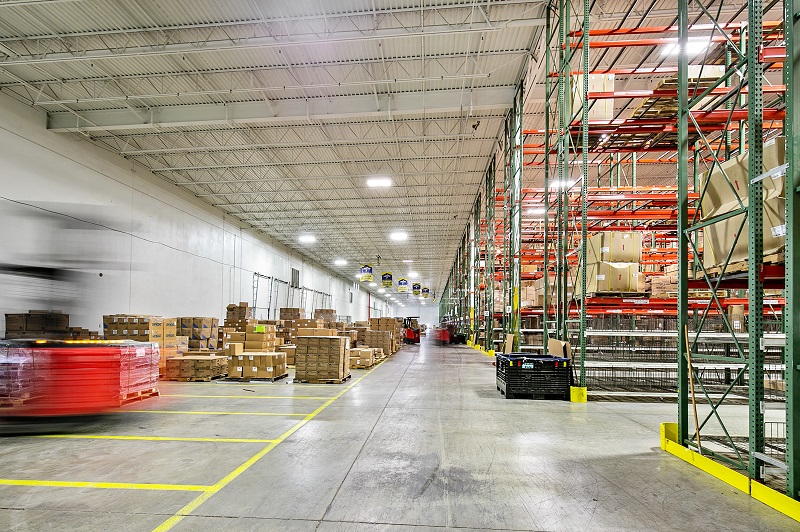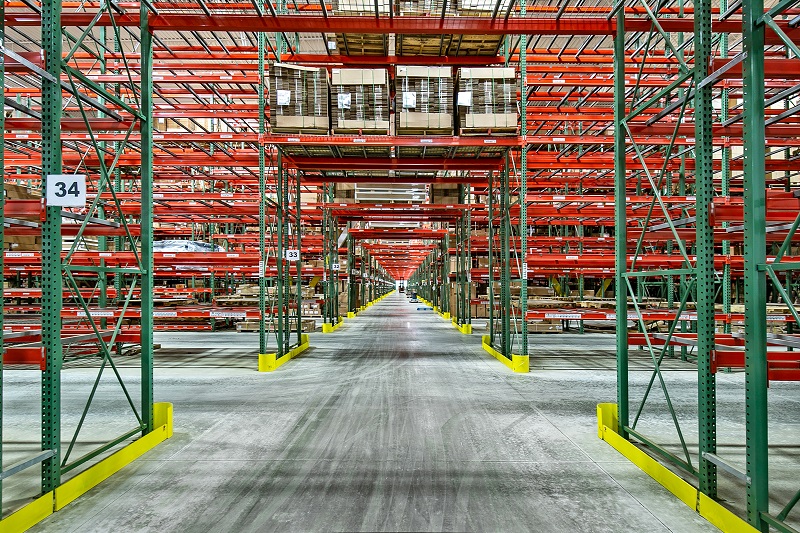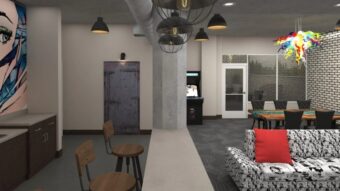No company purchases a commercial building hoping that it will one day become vacant. But Houston-based investor SparrowHawk isn’t overly concerned that one of its industrial buildings, a 502,000-square-foot facility near St. Louis, will soon lose its last tenant.
Instead, Alfredo Gutierrez, owner and founder of SparrowHawk, considers the upcoming vacancy of 255 Logistics Center to be an opportunity, largely because the industrial market in the St. Louis area and across the country is so strong.
At the same time, consumers have embraced online shopping during the COVID-19 pandemic even more than they had before March of last year. This means that companies need industrial space to deliver their products to more consumers faster than ever.
This all bodes well for an owner of a large chunk of industrial space in the heart of the Midwest.
“The headwinds are definitely behind our sails right now,” Gutierrez said. “Ecommerce is growing, and it’s a sector that has finally been introduced to the demographic that it needs to be introduced to, the retirees. There is a lot of wealth in the hands of retirees. They can afford to make purchases that Millennials can’t. This has all made the industrial market so strong right now.”
This optimism? It’s just another sign that the industrial sector across the Midwest is firmly in growth mode. And in some markets, that growth is explosive.
A prime opportunity

Developed in 2008, 255 Logistics Center is a 502,000-square-foot industrial building in the village of Sauget, Illinois, a little more than a five-mile drive from St. Louis. The high-cube industrial facility boasts 32-foot clear heights and modern amenities.
Later this year, though, Medline Industries, which occupies more than 300,000 square feet in the building, will leave the facility, moving into new industrial space it owns in the St. Louis market. When Medline leaves, 255 Logistics Center will be vacant.
But Gutierrez and Patrick Reilly, an industrial broker with the St. Louis office of JLL and one of the listing agents representing SparrowHawk, say that this is the best time since the facility was built 13 years ago to be empty.
The industrial market is simply so strong and the building such a rarity in the St. Louis area, that 255 Logistics Center won’t be empty for long, Reilly said.
A hot market
Why is Reilly so confident? First, the demand for ecommerce continues to grow, and has only become stronger during the COVID-19 pandemic. And as more customers order online, companies must seek out distribution space to make sure that they can ship their products to these customers as quickly as possible. That makes Midwest markets in the center of the country, such as St. Louis, more attractive.
“You know what the industrial market across the country is doing. It’s booming,” Reilly said. “It is absolutely booming. COVID has actually benefitted the industrial sector. Because of the changes in the way people are shopping now, the demand for industrial will only grow. Because of that, we are not worried about this building becoming vacant. We are confident that it will attract new tenants quickly.”
And while demand for industrial space continues to rise in St. Louis, supply is not keeping pace. There are only three existing industrial buildings in the market that can accommodate a tenant needing 200,000 or more square feet. For tenants that need 500,000 square feet, there are only two buildings in the St. Louis market, including 255 Logistics Center.
Reilly said that the building is flexible, too. SparrowHawk can divide the building up for more than one tenant. Or one tenant could take up all the space. Reilly points out, too, that the building has the modern attributes that tenants want in industrial space: truck courts, sprinkler systems and carefully designed floor space.
“It’s everything people are looking for in a modern bulk warehouse building,” Reilly said.
Gutierrez said that the facility’s close location to the CBD of St. Louis is another major selling point.
“You can stand in the parking lot and see the Arch from here,” Gutierrez said. “It’s in a location that tends to be where folks are migrating in great number, primarily because there is dirt available here and lots of it. It really does sit nicely for a modern bulk building. At the same time, the village of Sauget is reactive. Village officials are willing to sit with tenants and work in tandem with them. That is an attribute that you can’t say is common to every municipality in this area.”

Reilly said that the St. Louis industrial market has been particularly strong during the current market cycle, one that’s lasted from 2014 to the present. But during the last two-and-a-half years, the pace of new development in the industrial market here has almost doubled, he said.
This has been key for the St. Louis market. The new, modern space that has been built here has made St. Louis even more competitive with other major Midwest markets like Indianapolis, Columbus and Kansas City.
“And the good news for us is that this unprecedented level of new construction has resulted in unprecedented levels of absorption,” Reilly said.
This new bulk warehouse space, then, isn’t sitting empty. Tenants are filling it. That’s additional good news for SparrowHawk and 255 Logistics Center.
“If you are looking for a 500,000-square-foot building here, you have two options, ours being one of them,” Reilly said. “That is an unprecedented tightness in terms of new construction. All the trends are positive. These are terrific times to be in this space in our market.”
Gutierrez said that a growing number of potential tenants are looking for larger industrial space today. That makes 255 Logistics Center an even more attractive facility today, he said.
“We are about to be the belle of the ball,” Gutierrez said. “The true demand today is the larger site.”
Lessons learned
Another positive market force? Companies learned during the earliest days of the pandemic that they needed more warehouse space in the United States, closer to their customers.
When COVID-19 first began upending life in the United States, consumers were surprised to find that the products they ordered on Amazon and other online retailers were suddenly taking far longer to arrive at their doors. Many companies kept much of their inventory in overseas locations, and getting that product here suddenly took longer because of pandemic-fueled shutdowns.
Eager to avoid this problem in the future, companies are again focusing on finding warehouse space in markets across the country so that they can continue to deliver products quickly even during emergencies.
“It was an exercise in frustration to replace an appliance when this first happened,” Reilly said. “Companies now want more redundancy and flexibility. That will result in them occupying more net square footage. For markets like St. Louis, that will be a benefit.”
Like Reilly, Gutierrez is optimistic that more companies will seek out warehouse space in and around the St. Louis market.
“Until recently, St. Louis was the best-kept secret in the Midwest,” he said. “It had been an undiscovered gem. When folks were looking to buy in the Midwest, St. Louis kept slipping down the list. It was thought of separately from Indianapolis, Louisville and Columbus, markets like that. But St. Louis has always had every bit of the features and benefits of those markets. It really is a stronger market than people had given it credit for. And that’s why we have enjoyed investing here.”




